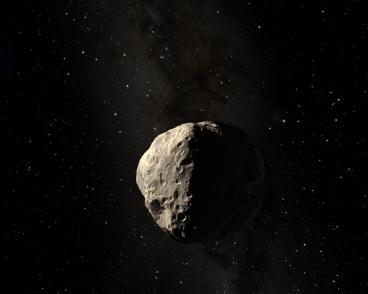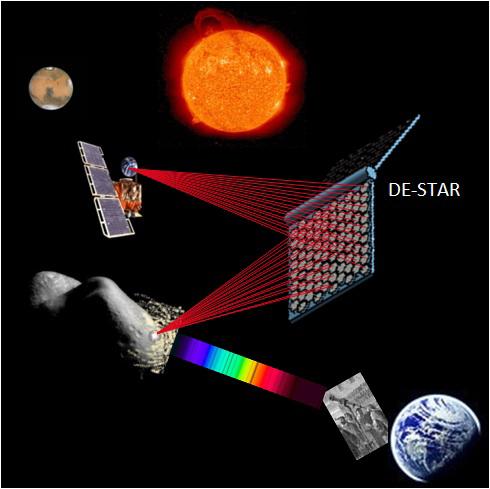Last week an asteroid flew right past Earth and a meteor hit Russia, but the next time space rocks threaten our planet, we might be better prepared.
Two U.S. scientists have designed a device that could realistically be built and used to destroy an asteroid 10 times the size of the one that barely missed our planet on Friday. The machine, known as DE-STAR (Directed Energy Solar Targeting of Asteroids and exploRation), would convert energy from the sun into laser beams that could vaporize or deflect an asteroid from millions of miles away.
“This system is not some far-out idea from Star Trek,” one of the researchers, Gary B. Hughes of California Polytechnic State University, said in a press release. “All the components of this system pretty much exist today. Maybe not quite at the scale that we'd need–scaling up would be the challenge–but the basic elements are all there and ready to go.”
Hughes and his colleague, Philip M. Lubin, designed several different sizes of DE-STAR. One of the smallest sizes was 100 meters across and would only be able to deflect asteroids or comets.
The largest size, however, would be 10 kilometers wide and could evaporate a 500-meter asteroid in one year.
“There are large asteroids and comets that cross the Earth’s orbit, and some very dangerous ones are going to hit the Earth eventually,” said Hughes. “Many have hit in the past and many will hit in the future.”
“We should feel compelled to do something about the risk. Realistic solutions need to be considered, and this is definitely one of those.”
New developments mean that highly efficient conversion of electrical power to light is now possible.
“Duck and cover is not an option,” Lubin said in the release. “Let’s start small and work our way up. There is no need to break the bank to start.”
“We’ve really tried to temper this with a realistic view of what we can do, and we approached it from that point of view. It does require very careful attention to a number of details, and it does require a will to do so, but it does not require a miracle.”
The Epoch Times publishes in 35 countries and in 21 languages. Subscribe to our e-newsletter.






